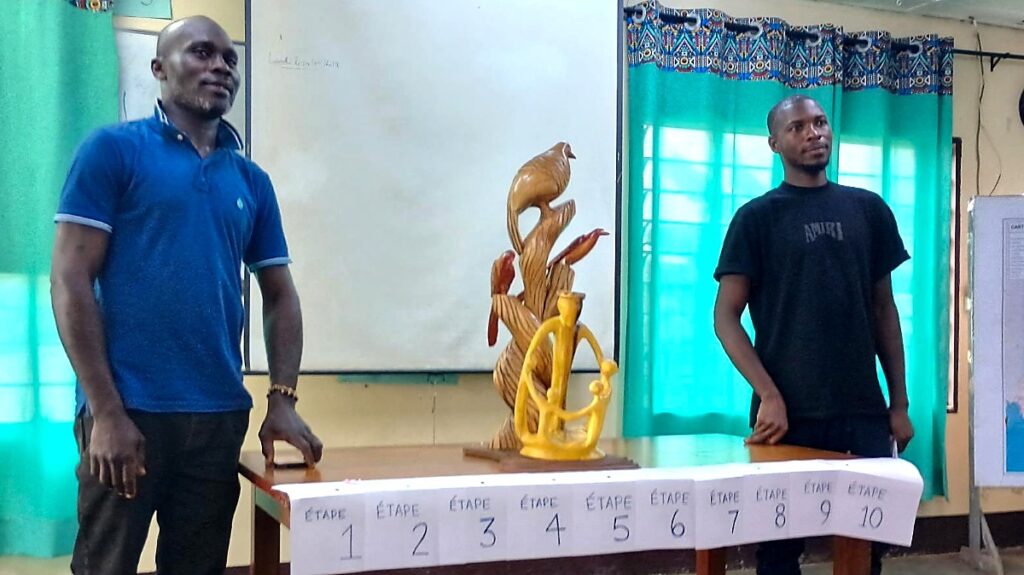Overview
From September 15–26, 2025, Scriptura held a 2 week workshop in Yaoundé, Cameroon, bringing together translators and musicians, from the Bakoko and Mengaka communities, and sculptors, to test new exegetical and ethno-arts resources for the Psalms (particularly Psalms 100, 133, and 2). The aim was to evaluate both the usability and field effectiveness of Scriptura’s materials—including the Psalms that Sing Poetic Workflow Guides and Translation and Performance Notes (TPNs)—and to gather participant feedback to refine them further.
Participants
Eighteen participants attended: 6 Scriptura facilitators, 5 people from the Bakoko language (1 exegete, 3 translators and 2 musicians), 5 people from the Mengaka language (1 exegete, 2 translators and 1 musician), 2 sculptors and 1 ethno-arts observer.
Objectives
- Test and evaluate the integrated methodology combining Scriptura and PTS (Psalms That Sing) approaches.
- Assess how exegetical materials support translation, music, and visual art rooted in local language and culture.
- Collect user feedback for improving content and pedagogy.
Summary of Key Findings
- High Value of Resources: All participant groups affirmed that Scriptura’s tools were “of capital importance” for understanding biblical poetry and ensuring theological accuracy. The TPNs were especially appreciated for their visual structure, colours, and detailed lexical notes.
- Translation Impact:
- Bakoko translators initially worked only from the French Louis Segond text, but after using Scriptura’s materials, they achieved greater precision and theological clarity.
- Mengaka translators favoured the TPNs for navigation and contextual notes but the exegete found there was not enough clarity for some key terms (e.g., joie/allégresse, reconnaître, divine names) and requested clearer notes on key terms and poetic structures. They did find the Poetic Workflow Guides more difficult to follow, especially if no training had been given in how to use them.
- Both teams emphasized the need for training in Hebrew poetic forms and for short introductory material explaining how to use the resources.
- Musicians: Found the familiarization and structure steps transformative for composing songs faithful to the psalm’s meaning. They stressed that “a musician must first be an exegete” and requested similar materials tailored for music creation, plus audio versions of the guides. For the longer and more difficult Psalm 2, they reported that it would have been very difficult to compose a song without our materials.
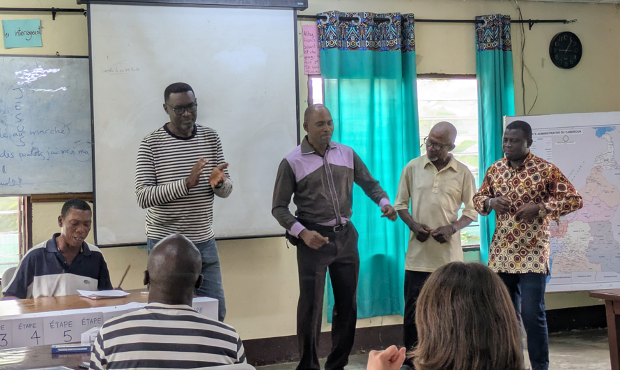
- Artists: Created sculptures inspired by joy, thanksgiving, and shepherd imagery. They valued the biblical grounding and the oral phase of the methodology. The materials would be more helpful if they included more technical help for musicians and sculptors.
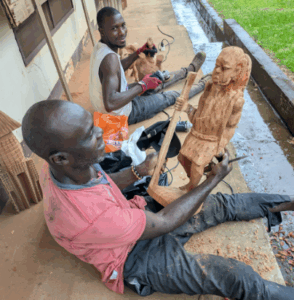
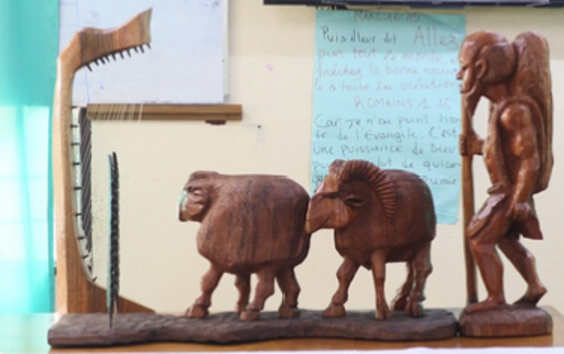
- Pedagogical Observations:
- The 10-step methodology (oral, text, and performance phases) in the workflow guides worked well once explained, but many assumed they were only for Oral Bible Translation.
- Participants recommended brief written and video introductions and training modules for inexperienced translators.
- The combination of translation and art deepened participants’ spiritual engagement. Many described the process as faith-strengthening and inspiring for evangelism.
Results
All objectives were met. Teams produced accurate translations, culturally resonant songs, and meaningful sculptures reflecting theological depth. The materials proved effective but require improved accessibility (audio/video formats, simplified introductions) and targeted training for users with varying experience levels.
Conclusion
The Cameroon workshop confirmed the value of Scriptura’s exegetical tools for uniting translation and the arts in local contexts. Participants’ feedback will guide the next phase of refinement—especially enhancing usability, clarity, and multimodal presentation—so that these resources can empower translators, musicians, and artists to communicate the Psalms faithfully and creatively within their communities.
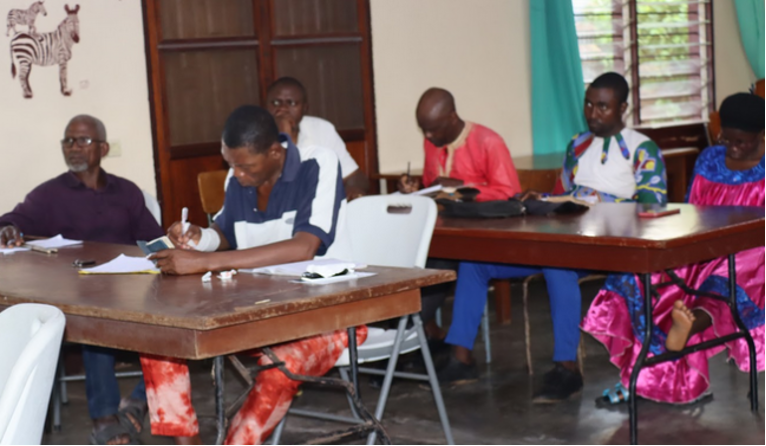
Workshop Proceedings:
Week 1
- Day 1–2: Workshop opening, devotions, introduction of objectives and methodology. Mengaka team used Scriptura resources; Bakoko team worked independently. Initial translation of Psalm 100, song composition, and sculpture work began.
- Day 3: Training on the ten-step translation process based on Psalm 133:
- Oral phase: Listening, Familiarization, Internalization, Composition, Drafting
- Text phase: Transcription, Content verification, Poetry verification, Finalization
- Performance phase: Song execution, sculpture, translation corrections
- Oral phase: Listening, Familiarization, Internalization, Composition, Drafting
- Days 4–5: Continued training and text work, emphasizing internalization and composition phases.
Week 2
- Day 6–7: Work continued on Psalms 100 and 133, and Psalm 2 was introduced. Teams continued translation and artistic work; feedback sessions highlighted observations on exegetical materials.
- Day 8: Verification phase with psalm advisor; teams revised translations based on feedback.
- Day 9: Finalization of texts and songs; public presentations of work.
- Day 10: Workshop concluded with prayers, encouragement, and recognition of achievements.
A more detailed report of the workshop proceedings can be found here: Cameroon Workshop by Bio
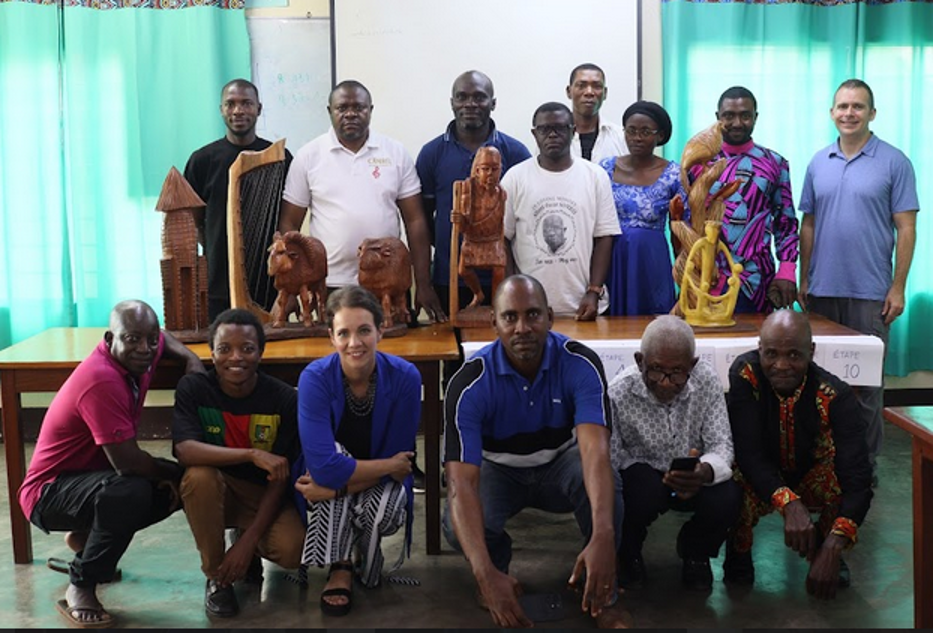
Key Findings
1. Translation Process & Use of Resources
Bakoko
- Initial translation was done without external resources; relied solely on French text (Louis Segond) and personal experience.
- Steps: familiarize with text → identify key terms → draft individually → group review → collective exegesis.
- Challenges: poetry was unfamiliar; no computer access limited ability to consult additional resources.
- Guide usage:
- Helped refine word choices, improve accuracy, classify verses.
- Audio/video format would have sped up work.
- Helped refine word choices, improve accuracy, classify verses.
- Suggestions: Need training on poetry.
Mengaka
- Preferred TPNs (visual resources) over the workflow guides; colours helped orientation.
- Steps: read multiple French versions → TPN verse-by-verse notes.
- Challenges: ambiguity in words (e.g.,“Adonai” vs. “Elohim,” [in the TPN for Psalm 100] “joie” vs. “allégresse,” “troupeau” for humans).
- The TPNs improved understanding of nuances and helped avoid literal translation.
- Suggestions: clearer notes on divine names, cultural references, and poetic elements.
2. Songwriting & Music
- Translators and musicians collaborated closely; exegesis informed song composition.
- Songs followed translated text but allowed for musical adaptation (refrains, line order).
- Musicians needed to understand psalm meaning to preserve theological accuracy.
- Warm-up/familiarization steps were particularly helpful.
- Guide materials helped structure songs and connect music with psalm emotions.
- Observed benefit: music facilitated deeper understanding and internalization of the psalm.
3. Sculpture & Visual Arts
- Sculptors were inspired by Psalm imagery: harp (music), lamb (sacrifice), shepherd (leadership), doves (peace).
- First experience creating biblical-inspired sculptures; found working alongside translators helpful.
- Needed quick immersion into psalm meaning; materials partially helpful but insufficient for fully understanding context or emotions.
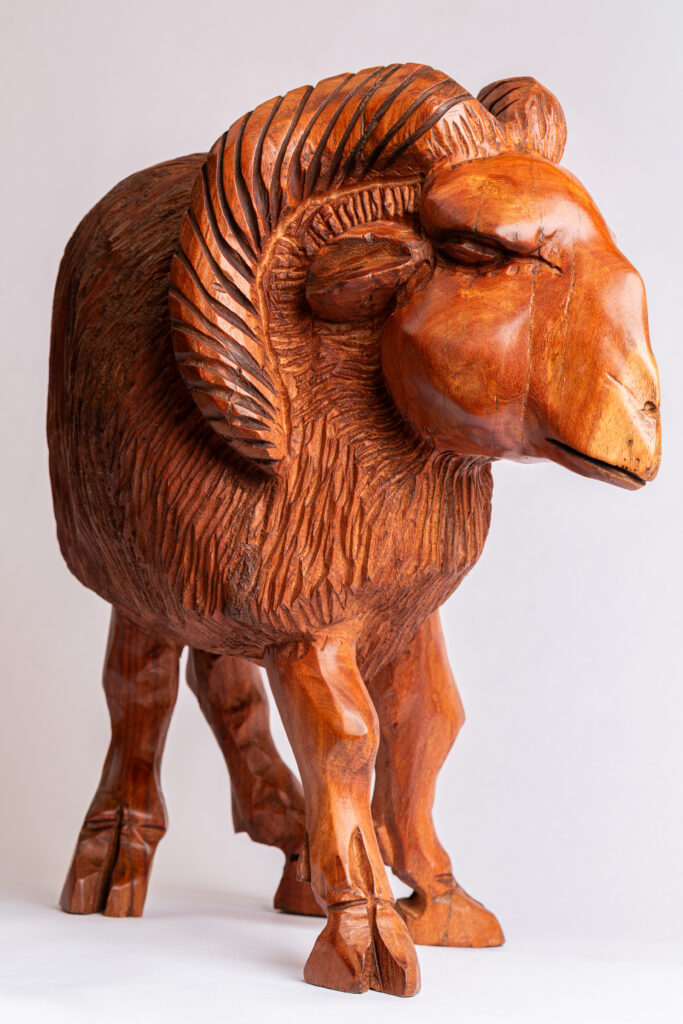
4. Exegetical Insights & Materials Feedback
- TPNs (Translation and Performance Notes) were more useful than the workflow guides: easier to navigate, rich in grammatical, cultural, and theological info. The layout and use of colour also made the TPNs easier to navigate than the guides.
- Challenges in materials:
- Some confusion over line length, rhetorical devices, repetition, and poetic features.
- Although the TPNs did have good information on overview, authorship, context, audience and emotional tone, some teams needed guidance as to how to find it.
- Step sequencing in methodology in the Poetic Workflow Guides sometimes felt rigid; participants adapted steps.
- The translation of the TPN into French was not always clear.Translations into other languages need to not just be translated but adapted for the other language.
- Some confusion over line length, rhetorical devices, repetition, and poetic features.
- Key takeaways:
- Materials enabled deeper engagement and prevented literal translations.
- Musicians and artists also benefited, especially when able to refer to psalm structure, emotions, and sections.
- Training is essential for new translators, especially if using the workflow guides. TPNs can be used without prior training, but training in poetry beforehand would make them more useful.
- Materials enabled deeper engagement and prevented literal translations.
5. Spiritual & Emotional Impact
- Translators, musicians, and sculptors found the experience enriching and inspiring. Before the workshop, the sculptors had never thought it was possible to create art from the Bible.Now they know that it is!
- Songs and sculptures made psalms tangible and emotionally resonant.
- Participants gained appreciation for the depth of Psalms and the richness of their poetic, theological, and emotional content.
Recommendations & Suggestions for the Future
1. Materials:
- The workflow guides need prior training in order to use them properly.
- The TPNs were more intuitive, especially for existing Bible translation teams, because they look like other translation helps (such as the Translation Notes). However, they could be helped if accompanied by introductory videos.
- Participants requested specific guidance for artistic adaptation (eg, musical instruments etc), but given the worldwide audience of our materials and the variation in musical instruments and styles around the world, this may not be possible. Perhaps we could engage an ethno-arts specialist to help in terms of artistic universals which cross cultures.Examples could however be provided.
- Sequence steps flexibly to accommodate songwriting and the individual needs of translation teams.
2. Training:
- Before teams commence translating poetry, it would be helpful for them to have training on Hebrew biblical poetry, and also on how to discover their own language’s poetic forms.
Overall Conclusions
- The workshop achieved its goal: participants could translate, compose, and create artworks reflecting Psalms 100, 133, and 2. One musician noted that during the workshop he was able to create a new song in a few days which would normally take him months.
- Participants reported that the workshop and TPNs helped them to produce more accurate translations.Musicians reported that the songs were not just based on Scripture, they were actual Scripture translations.
- TPNs were essential, particularly for inexperienced translators and more complex psalms.The workflow guides were not as intuitive but were also helpful once it was understood how to use them.
- The workflow guides helped to provide a process and methodology that the TPNs alone could not do.However, they needed to be taught how to use the guides.
- As a standalone resource, the TPNs are more helpful.But with a workshop setting, the workflow guides would produce a better workflow and better results.
- Collaboration between translators, musicians, and artists enhanced understanding and creativity.
- Spiritual and emotional engagement was significant, showing that combining translation, song, and visual arts strengthens Scripture engagement.
Respectfully submitted:
Thomas Hemphill, Director of Field, with the input and assistance of field members Bio Athanase Yanto, Nikki Mustin, Ervais Fotso, Gregory Sharpe, John Mayele and ChatGPT.
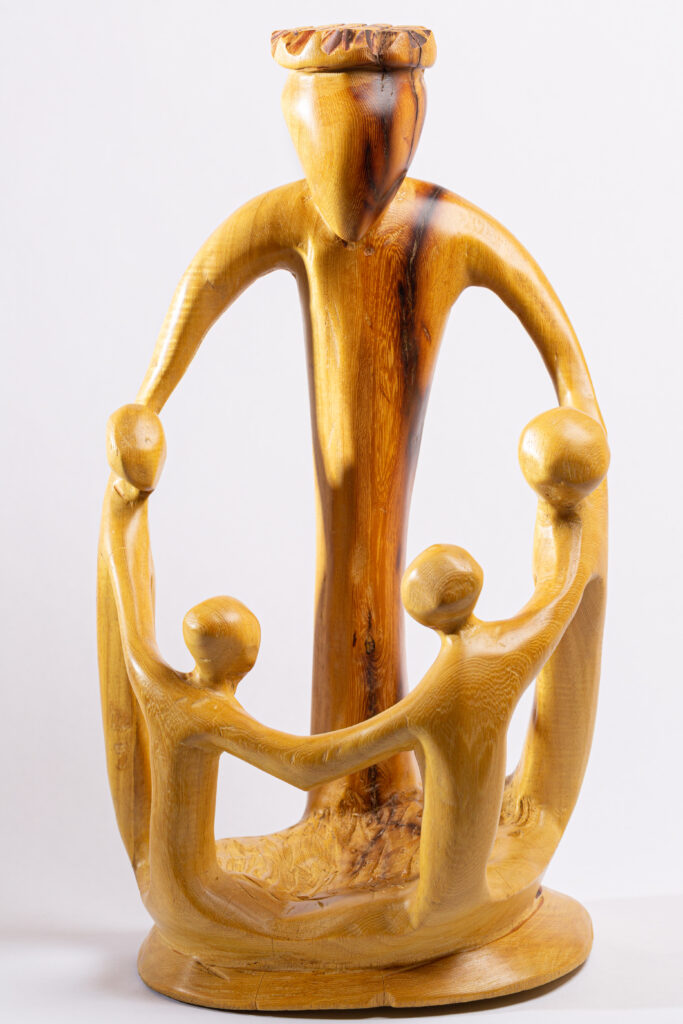
Psalm 133 (NLT)
1 How wonderful and pleasant it is
when brothers live together in harmony!
2 For harmony is as precious as the anointing oil
that was poured over Aaron’s head,
that ran down his beard
and onto the border of his robe.


